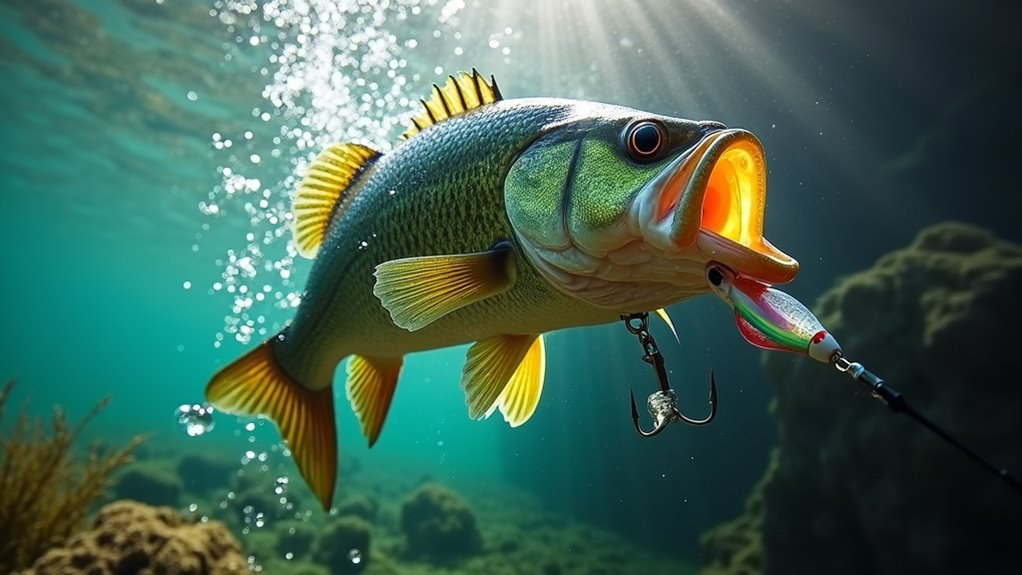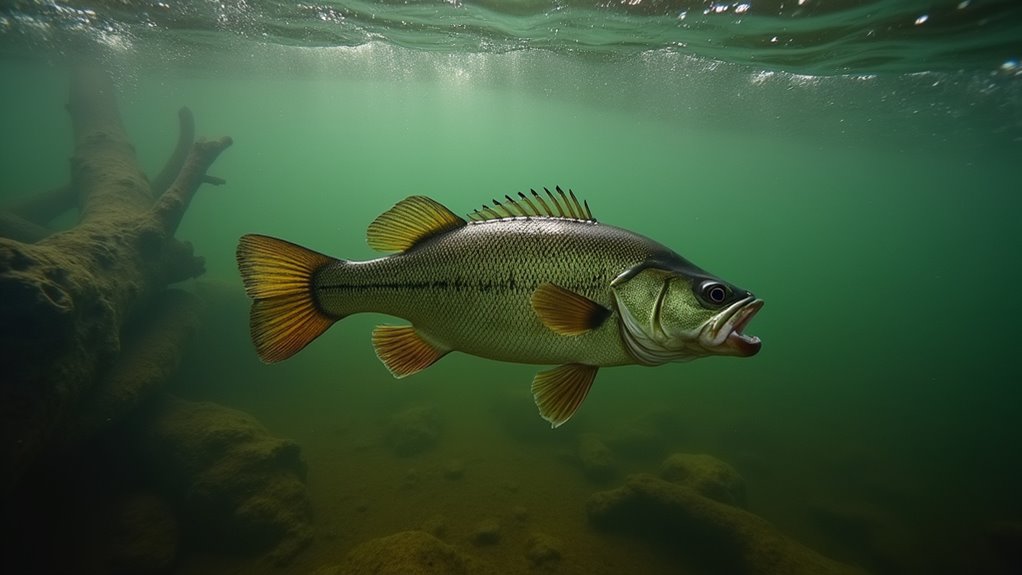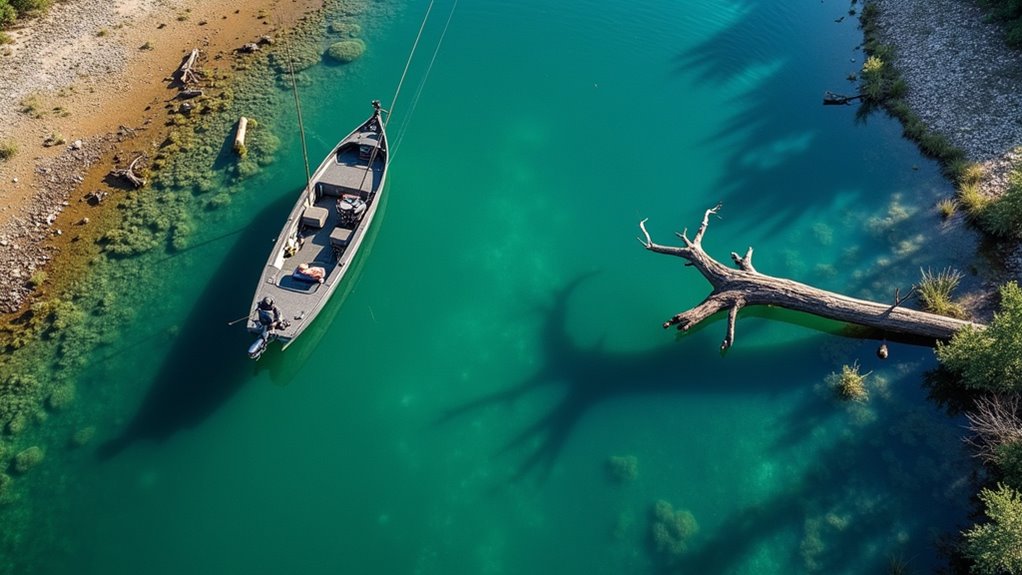Physical Address
304 North Cardinal St.
Dorchester Center, MA 02124
Physical Address
304 North Cardinal St.
Dorchester Center, MA 02124

Unlock secret bass fishing techniques that trophy hunters use during peak 55-75°F temperatures when fish become most aggressive.
You probably don’t realize that bass actually hunt more aggressively in water temperatures between 55-75°F, making spring and fall your absolute prime seasons for landing trophy fish. Most anglers focus on the obvious spots, but the real secret lies in understanding how bass relate to subtle underwater structures and seasonal shifts that aren’t visible from the surface. Master these hidden patterns, and you’ll consistently outfish everyone else on the water.

When you understand how bass behave throughout the year, you’ll dramatically improve your catch rates and spend less time guessing where they’re hiding. Bass are cold-blooded creatures whose activity levels directly correlate with water temperature.
In spring, they move shallow for spawning, making them aggressive and territorial.
Summer pushes them to deeper, cooler waters during midday heat, but they’ll feed actively during dawn and dusk.
Fall triggers intense feeding as they prepare for winter, creating excellent fishing opportunities.
Winter slows their metabolism dramatically – they’ll still bite, but you’ll need slower presentations and patience.
Pay attention to water temperature, weather fronts, and moon phases. These factors influence bass movement and feeding patterns more than most anglers realize.
Just as anglers prepare gear for successful fishing trips, having essential first aid supplies ready ensures you can handle any injuries that might occur during your bass fishing adventures.
While bass behavior gives you the roadmap to finding fish, selecting the right lure and presenting it properly seals the deal. You’ll want different lures for different situations.
Topwater baits like poppers work best during early morning or late evening when bass feed near the surface. Crankbaits excel in covering water quickly, while soft plastics shine when bass are finicky or holding tight to cover.
Your presentation matters more than the lure itself. Vary your retrieve speed and rhythm—sometimes a slow, steady pull works, other times erratic jerks trigger strikes. Match your lure color to water clarity: natural colors in clear water, bright or dark colors in murky conditions.
Don’t forget to pause occasionally; bass often strike during these moments when your lure appears vulnerable. After each fishing trip, thoroughly dry your gear to prevent mildew growth which can damage expensive lures and tackle boxes.

Once you’ve mastered lure selection, your success hinges on reading water like a seasoned angler. You’ll want to identify key structural elements that bass use for cover and ambush points. Look for fallen trees, rock piles, weed edges, and depth changes – these create oxygen-rich zones where baitfish congregate.
Pay attention to water color shifts. Muddy water meeting clear water often holds feeding bass. Drop-offs near shallow flats are prime targets, especially during early morning and late evening. Use your electronics to map underwater contours, but don’t rely solely on technology.
Watch for surface disturbances like nervous baitfish or subtle current breaks around structures. Wind-blown points concentrate food sources, making them bass magnets. Always approach structure from deep water, casting shallow and working your way out systematically. When planning extended fishing trips, pregnant anglers should consider camping safety precautions and comfort measures for a successful outdoor experience.
You’ve got the foundation—now it’s time to hit the water and put these techniques into practice. Remember, bass fishing success flows like a river; it’s all about reading the current situation and adapting your approach. Don’t get discouraged if you’re not catching fish immediately. Every cast teaches you something new about the water you’re fishing. Stay patient, keep experimenting with different lures and presentations, and you’ll start connecting with more bass consistently.